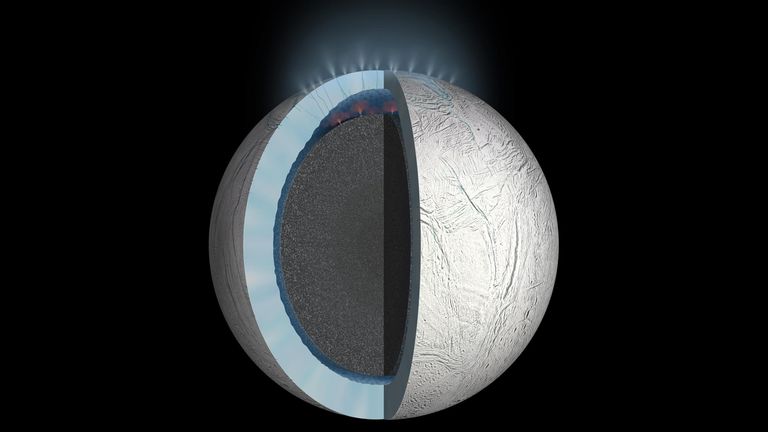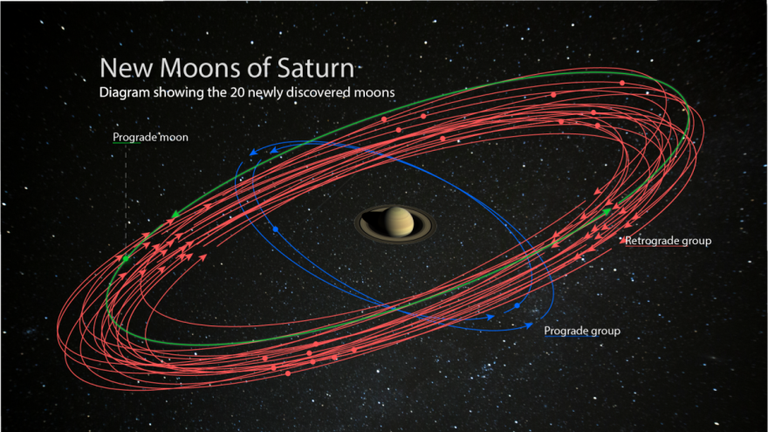Researchers believe that thermal activity on the sea floor of the moon could mean there is enough energy there to support life.
 |
| Liquid water beneath the ice of Enceladus could harbour alien life. South pole pictured top. Pic: NASA |
A new scientific discovery suggests that chemical reactions on the sea floor of Saturn's moon Enceladus could mean there are enough energy sources to support life.
The surface of Enceladus is covered by between 18 to 24 miles of thick clean ice, making it one of the most reflective bodies in the solar system. However, centred beneath the ice at the moon's south pole there is believed to be an enormous ocean.
Scientists at the Southwest Research Institute (SwRI) have developed a new model which explains how the plumes of gases and frozen sea spray which have erupted through cracks in Enceladus' surface suggest a complex world beneath its icy crust.
"The dynamic interface of a complex core and seawater could potentially create energy sources that might support life," said SwRI's Dr Hunter Waite, the principal investigator behind NASA's Cassini mission spectrometer analysis of the moon.

"While we have not found evidence of the presence of microbial life in the ocean of Enceladus, the growing evidence for chemical disequilibrium offers a tantalising hint that habitable conditions could exist beneath the moon's icy crust," Dr Waite added.
Organic compounds which are necessary for life were discovered in water plumes by NASA's Cassini probe. These plumes are known to mysteriously erupt from the moon's surface, although when the organic compounds were discovered scientists urged caution on assuming they meant there was life there.
Almost 230 years later, the Cassini spacecraft conducted another fly-past of its southern pole, travelling through one of the ice world's mysterious cryovolcanic plumes which had been discovered to be erupting from the moon.
Cassini sampled the water-rich plumes, suspected to originate from a vast liquid ocean beneath the surface of Enceladus, and discovered organic compounds - molecules which contain carbon and are essential to all known life.
However, NASA said: "The subsurface ocean evidence supports the inclusion of Enceladus among the most likely places in our solar system to host microbial life."
These compounds, including the molecule methanol, have now been detected in a much more massive quantity than previously expected, using the IRAM radio telescope, which is 30m across, in the Spanish Sierra Nevada.
Jupiter's much bigger moon Europa is also known to have liquid water under its surface, and both it and Enceladus could be possible habitats for extraterrestrial microbes, scientists believe.
The water on Europa is kept from freezing by warming tidal forces generated by the gravity of the giant gas that the moon orbits.
Source News
No comments:
Post a Comment
Note: Only a member of this blog may post a comment.